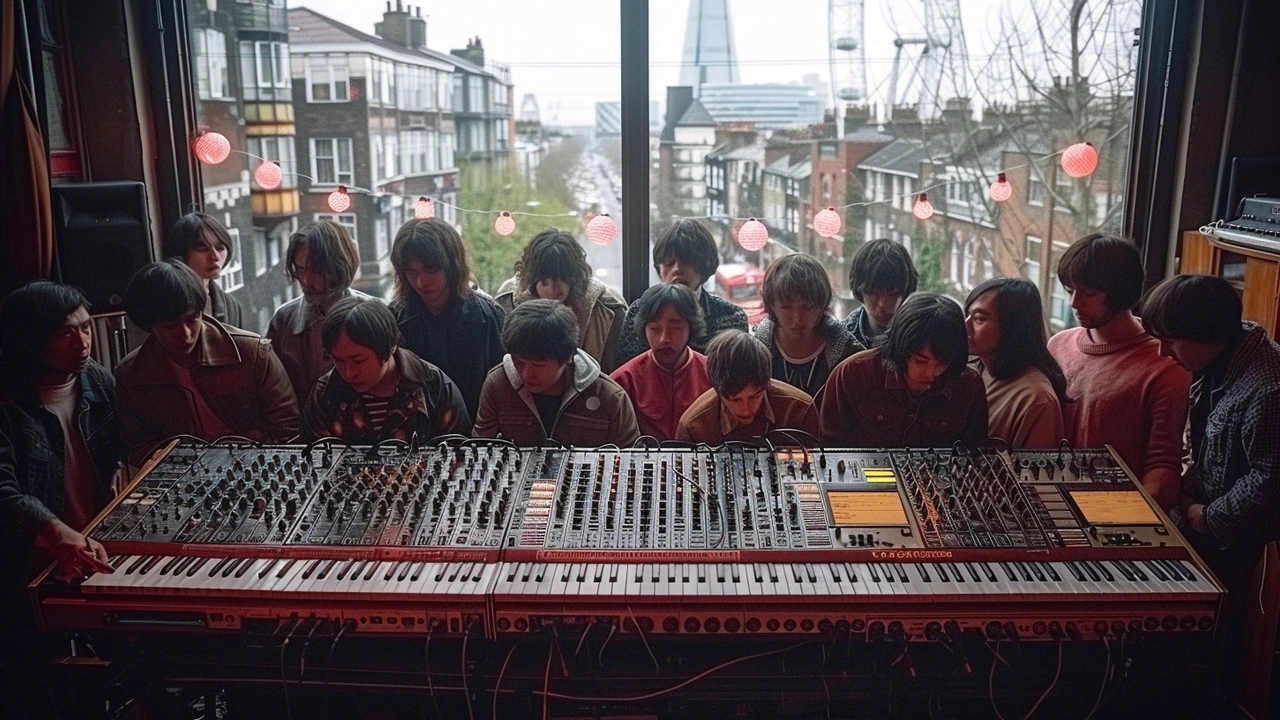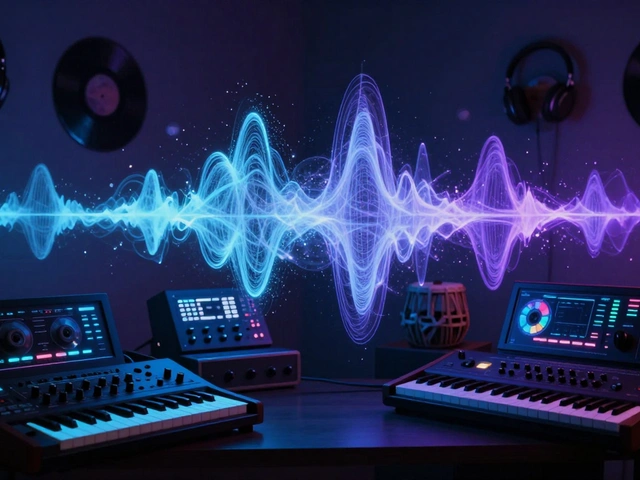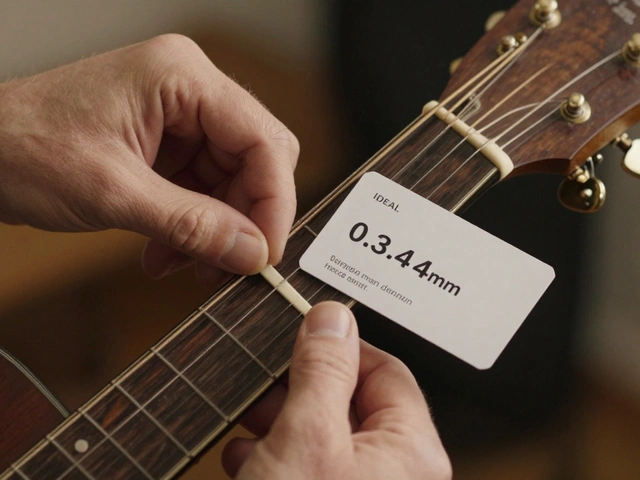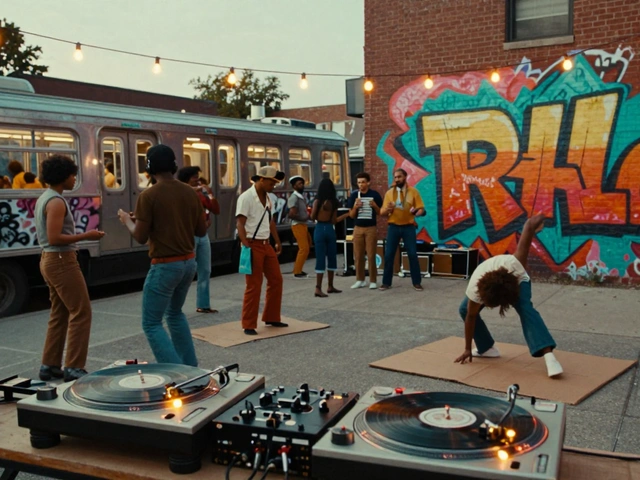Electronic music isn't just a genre; it's a mirror of our digital existence. It captures the essence of our era, influenced by the technology that surrounds us daily and, in turn, influencing how we interact with that technology.
The beginnings of electronic music date back to the early 20th century when innovators started experimenting with electrical instruments. Fast forward to today, and it encompasses countless subgenres and styles, from house to techno to ambient.
This music doesn't only play in clubs or at festivals. It's in commercials, movies, and even the background of your favorite video games. It shapes trends, impacts other music genres, and reflects cultural changes.
Key artists have led the way in pushing electronic music forward. Their innovative sounds and creative approaches have defined and redefined what electronic music can be.
If you're curious about diving into this genre, start by exploring some of its most famous subgenres. Check out popular playlists or follow recommendations from friends who are into the scene. Remember, the beauty of electronic music lies in its diversity, and there's something for everyone.
- The Rise of Electronic Music
- Impact on Modern Culture
- Key Artists and Innovators
- Unique Characteristics of Electronic Music
- Exploring and Enjoying Electronic Music
The Rise of Electronic Music
The roots of electronic music can be traced back to the early 20th century, a period of immense technological innovation. One of the first landmarks was the creation of the Theremin in 1920 by Léon Theremin. This electronic instrument, played without physical contact, introduced the world to eerie, futuristic sounds that fascinated audiences and composers alike. It wasn't long before other inventors began experimenting with new ways to generate sound electronically.
As the decades progressed, the development of electronic instruments continued. The 1930s saw the appearance of the Hammond organ and later, in the 1950s, the emergence of the Moog synthesizer. These instruments were pivotal, opening up new possibilities for creating music that had never been heard before. It was a time when the idea of making music without traditional instruments started taking shape and gaining acceptance.
In the 1960s and 1970s, electronic music began to enter mainstream consciousness. Pioneering artists like Kraftwerk used synthesizers and drum machines to produce unique sounds that set them apart from the traditional rock and pop bands of the time. Their work played a crucial role in establishing electronic music as a viable genre. Kraftwerk's influence extended well beyond their home country of Germany, impacting the trajectory of music on a global scale.
"Kraftwerk’s sound was so unique and forward-thinking, it set the blueprint for the future of electronic and dance music," stated music historian Kurt B. Reighley.
The 1980s witnessed an explosion of electronic music, largely due to the advent of affordable digital synthesizers and drum machines. Artists like Depeche Mode, New Order, and The Human League brought electronic music into the pop mainstream. This period also saw the rise of house music in Chicago and techno in Detroit, genres that utilized electronic music's evolving technology to create entirely new soundscapes. The underground rave scene started flourishing during this time, characterized by its use of electronic sound and its inclusive, DIY ethos.
With the rise of the internet and digital technology in the late 1990s and early 2000s, electronic music became more accessible to aspiring musicians. Software like Ableton Live and programs such as Pro Tools enabled artists to produce high-quality tracks from the comfort of their own homes. This democratization allowed for an explosion in both the quantity and diversity of electronic music being created and shared online, making the genre even more influential and widespread.
Today, electronic music is a global phenomenon, influencing numerous other genres and facets of popular culture. Festivals dedicated to electronic music, such as Tomorrowland and Ultra Music Festival, draw crowds in the hundreds of thousands, showing the genre's massive appeal. From its humble beginnings to its current status as a dominant force in the music industry, the rise of electronic music provides a fascinating glimpse into our ever-evolving relationship with technology and sound.
Impact on Modern Culture
Electronic music has infiltrated all aspects of modern culture, leaving a noticeable imprint on everything from nightlife to movie soundtracks. It has evolved from a niche genre to a mainstream form of expression enjoyed globally. Places like Berlin and Ibiza are renowned for their vibrant electronic music scenes, attracting enthusiasts from all over the world.
One significant influence of electronic music is its transformative effect on the traditional concept of the music concert. With massive festivals like Tomorrowland and Coachella featuring prominent electronic music artists, these events transcend simple performances. They become immersive experiences with light shows, visual art, and large-scale stage productions, blending technology with music in ways previously unimaginable.
Electronic music has also reshaped how artists create and share their work. The internet and digital platforms like SoundCloud and Bandcamp enable musicians to distribute their music without relying on record labels. This democratization has led to a surge in diversity, allowing artists from different backgrounds to reach wide audiences. A striking example is the rise of lo-fi hip hop, a subgenre that gained massive popularity through YouTube streams, fostering a new community of fans and creators.
In the realm of cinema and video games, electronic music plays a pivotal role. Scores from movies like "Blade Runner" and video games like "The Last of Us" use electronic sounds to evoke certain moods and atmospheres. This music provides a distinctive auditory experience that can transport audiences into different worlds. Hans Zimmer, a renowned composer, has often praised the versatility of electronic music in film scoring:
"Electronic music brings a kind of flexibility that adds depth to the narrative. It can be soft and haunting or loud and exhilarating."
The fashion industry has also caught onto the electronic music wave. Trendsetting designers often collaborate with electronic musicians for runway shows, using beat-driven tracks to set the mood. This synergy between music and fashion highlights the genre’s influence and its ability to permeate various aspects of cultural expression.
Electronic music acts as a reflection of our tech-savvy society, mirroring the rapid technological advancements of the modern age. Its impact is visible everywhere, from the background beats in commercials to the soundtracks of social media videos. The genre's adaptability and broad appeal ensure its presence in contemporary culture, making it a significant contributor to the arts and entertainment industries.
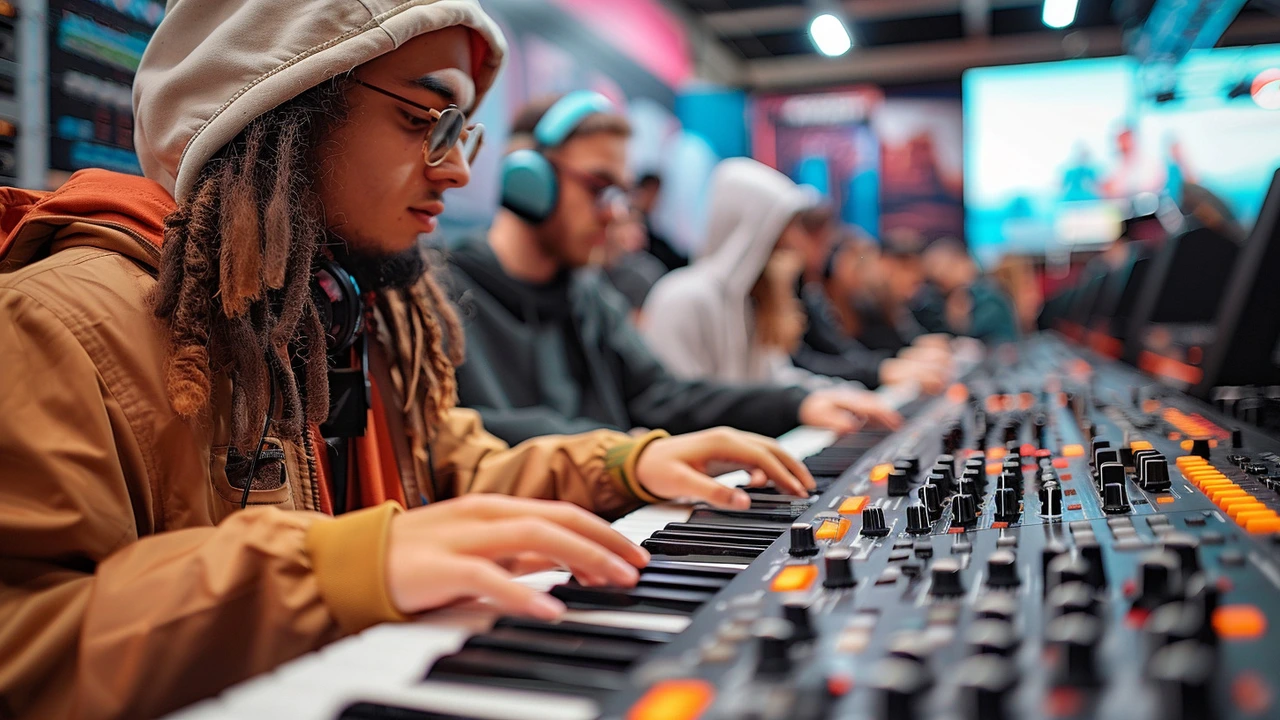
Key Artists and Innovators
Electronic music has been shaped by a variety of talented artists who have pioneered new sounds and techniques. These innovators have not only influenced other musicians but have also left a lasting impact on the music industry and culture as a whole.
One of the key figures in electronic music is Kraftwerk. This German band, formed in the early 1970s, is often credited with being one of the pioneers of electronic music. Their use of synthesizers and drum machines, combined with minimalist yet catchy melodies, laid the groundwork for many genres that would follow. Songs like "Autobahn" and "The Model" are still celebrated today for their innovative sound.
Another iconic name in electronic music is Daft Punk. The French duo, known for their robot personas and elaborate live performances, brought electronic music into the mainstream. Albums like "Homework" and "Discovery" feature a blend of house, funk, and disco influences. Their track "One More Time" remains a global anthem. In 2013, their album "Random Access Memories" won several Grammy Awards, including Album of the Year, solidifying their status as legends in the industry.
"Electronic music is the classical music of the 21st century." - Moby
Moby is another influential figure whose work spans several decades. With hits like "Go" and the critically acclaimed album "Play," Moby's music has crossed over into multiple genres, bringing electronic sounds to a wider audience. His ability to blend electronic elements with soulful melodies and samples has earned him a lasting place in music history.
More recently, artists like Deadmau5 and Skrillex have pushed the boundaries of what electronic music can be. Deadmau5, with his signature mouse helmet and progressive house beats, has garnered a massive following. Skrillex, on the other hand, brought dubstep to the forefront with tracks like "Scary Monsters and Nice Sprites," revolutionizing the genre with his aggressive, bass-heavy style.
The influence of these key artists extends beyond music. They have inspired changes in fashion, visual arts, and even technology. For example, many of the visual elements in electronic music performances, such as light shows and holograms, were inspired by these innovators.
If you're new to electronic music, exploring the work of these key artists is a great starting point. Their contributions have shaped the landscape of modern music and continue to inspire new generations of musicians. From Kraftwerk's mechanical sounds to Daft Punk's fusion of genres, each artist offers a unique perspective on what electronic music can be. Dive into their discographies and experience the evolution of electronic music firsthand.
Unique Characteristics of Electronic Music
Electronic music stands out due to its distinctive use of technology and innovation. Unlike traditional genres, it relies heavily on electronic devices such as synthesizers, drum machines, and computers to create sound. This technology-driven approach allows for an almost infinite range of tonal possibilities and rhythmic patterns. Artists can manipulate sound waves in ways that are impossible with acoustic instruments, producing otherworldly textures and atmospheres.
One of the most notable aspects of electronic music is its emphasis on production and sound design. In this genre, the producer often takes on a role similar to that of a composer in classical music. Instead of just playing notes, they craft entire soundscapes. By layering different sounds and effects, they can evoke emotions and tell stories without needing lyrics. This has made electronic music a popular choice for movie scores and video game soundtracks.
Another defining feature is the genre's evolution alongside technology. As software and hardware have advanced, so have the sounds and techniques used in electronic music. Early pioneers like Kraftwerk and Jean-Michel Jarre paved the way with their use of analog synthesizers and sequencers. Today, artists can use powerful digital audio workstations (DAWs) like Ableton Live or FL Studio to compose, arrange, and edit their tracks with incredible precision and versatility.
The genre also embraces a DIY ethos, making it accessible to anyone with a computer and some basic software. This inclusivity has democratized music production, allowing bedroom producers to create tracks that can rival those of established artists. Online communities and tutorials further support this ecosystem, providing budding musicians with the knowledge and tools they need to flourish.
Additionally, electronic music often features repetitive rhythms and looped sequences, which can have a mesmerizing effect on listeners. This repetitive structure is ideal for dancing, making electronic music a staple in clubs and festivals around the world. The steady beat helps to synchronize the movements of large crowds, creating a sense of unity and shared experience.
A well-known DJ once said, "Electronic music isn’t just about notes and melodies; it’s about creating a whole environment of sound."
The genre's global reach has also led to the fusion of electronic sounds with various cultural influences. From Latin American reggaeton to Japanese synth-pop, electronic music blends seamlessly with local styles, creating new and exciting hybrid genres. This cross-pollination of ideas keeps the genre fresh and continually evolving.
Finally, let's not forget the visual element of electronic music performances. Light shows, lasers, and projection mapping often accompany live sets, enhancing the sensory experience. These visual components are meticulously synchronized with the music, providing an immersive experience that delights both the eyes and ears. This creates a multisensory environment that leaves a lasting impression on the audience.
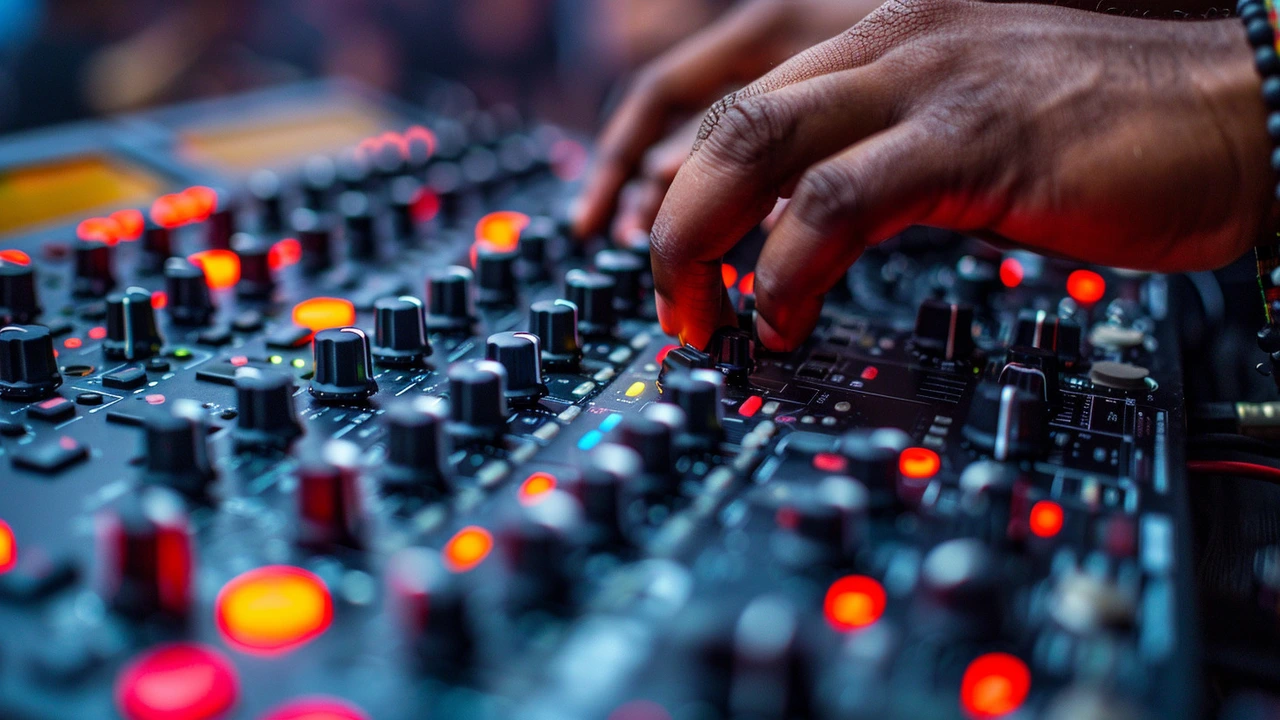
Exploring and Enjoying Electronic Music
Electronic music can seem like a vast and complex world. However, with a little guidance, it becomes an exciting journey into diverse soundscapes. One of the first steps in exploring electronic music is to understand its various subgenres. Each one offers a unique flavor and appeals to different tastes. For example, house music often has a steady, danceable beat, while ambient music focuses on creating an atmospheric soundscape. This variety means there's something for everyone.
Start your exploration by diving into subgenres that pique your interest. Many streaming platforms offer curated playlists that feature a mix of popular tracks and hidden gems. These playlists are an excellent way to get acquainted with what the genre has to offer. Platforms like Spotify, Apple Music, and even YouTube have special sections dedicated to electronic music, making it easy to find what resonates with you.
Live performances are another amazing way to experience electronic music. The energy at a festival or club can be contagious. Events like Tomorrowland, Electric Daisy Carnival, and Ultra Music Festival are famous for their incredible line-ups and mind-blowing productions. These festivals bring together some of the biggest names in electronic music, offering a live experience that’s hard to match.
Don't overlook the historical impact of electronic music. Artists like Kraftwerk, Daft Punk, and Aphex Twin have paved the way for many modern musicians. Learning about these pioneers and their contributions helps deepen your appreciation for the genre. Additionally, documentaries and books on electronic music history can provide valuable insights and context.
Get involved in online communities where enthusiasts discuss the latest tracks, share their mixes, and talk about everything electronic music. Websites like Reddit, forums, and Facebook groups offer a platform to connect with like-minded people. Engaging in these communities can lead to discovering new tracks and artists you might not find otherwise.
Creating your own music can also be a rewarding way to immerse yourself in the electronic music scene. Software like Ableton Live, FL Studio, and Logic Pro X are fantastic tools for beginners and experienced musicians alike. Online tutorials and courses are plentiful, providing step-by-step guidance on producing your own beats and tracks.
Remember, exploring electronic music is a personal journey. There's no right or wrong way to dive into it. Take your time to discover what you love, and let your tastes evolve. The digital world's soundtrack is endlessly fascinating, and there's always something new to explore.

